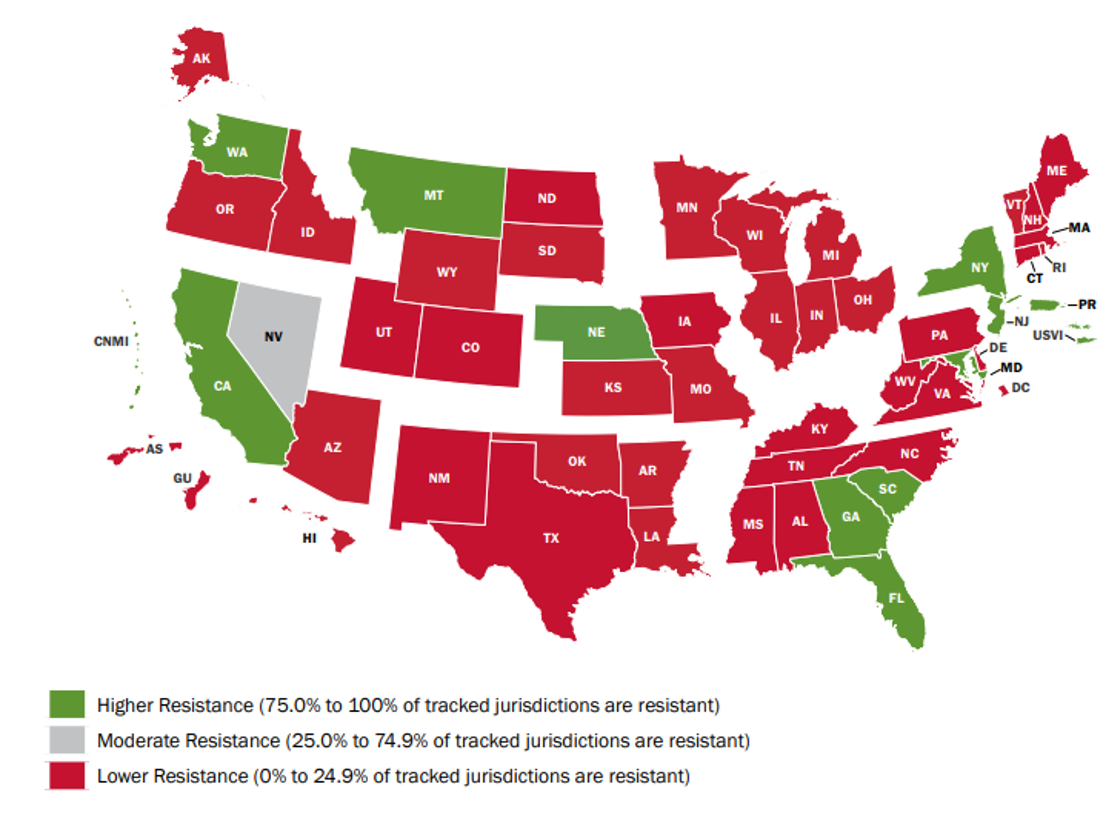FEMA tracks the building code adoption status for state, local, tribal and territorial governments across the nation to evaluate several important aspects of a community’s natural hazard risks and building code adoption.
This effort is often referred to simply by its acronym, BCAT.
As of Q2 2024:
32%
Of natural hazard-prone jurisdictions have adopted current hazard resistant building codes.
National Adoption Status
Access FEMA's BCAT Portal to identify which building codes your area has adopted and to learn your risks,
Access the Portal
The nationwide percentage looks at all jurisdictions that have adopted the current or next most recent editions of the International Building Code and the International Residential Code without weakening any natural hazard-resistant provisions.
The table below displays the percent of tracked jurisdictions that are resistant to the hazards identified, along with the annual and quarterly change.
| Hazard | Resistant Percentage | Quarterly Change | Annual Change |
| Damaging Wind | 55% | +12% | +15% |
| Hurricane Wind | 63% | +1% | +7% |
| Tornado | 24% | +1% | +2% |
| Flood | 44% | +9% | +12% |
| Seismic | 56% | 0% | +8% |
| Combined | 32% | 1% | +5% |
Two important caveats to the nationwide percentages displayed above:
- The percentage emphasizes the importance of adopting current building codes. It does not mean communities built to the 2015 codes – for example – are suddenly underprepared.
- Adoption is just the first step in natural hazard resistance. Enforcement is key to ensuring the best building practices for new and existing buildings. Adopting a new code does not suddenly mean older structures conform to the latest advances in science and technology.
What is hazard-resistance?
Natural hazard-resistant provisions have been part of the International Building Code and International Residential Code since their first editions in 2000. New editions of the codes are released every three years, improving and expanding on the hazard-resistant provisions.

Current codes incorporate the best new science. As a result, FEMA considers communities “hazard-resistant” if they’ve adopted the latest or second most recent codes without weakening the hazard-resistant provisions through amendments. The Building Codes Save Study noted that adopting current codes “increases safety and reduces financial losses, supporting more rapid recovery after disasters.”
Another important caveat is that hazard resistance means different things depending on the hazard. The most significant example of this is seismic code provisions. The other hazard-resistant provisions address life safety as well as reducing damage to structures. Presently, seismic codes primarily focus on saving lives. After all, “earthquakes don’t kill people, buildings do.”
Tracking Building Code Adoption Nationwide
This module provides information on FEMA’s Building Code Adoption Tracking (BCAT) System which is how FEMA tracks building code adoption across the nation. The module also walk viewers through some of the resources that are provided through BCAT. This video series serves as a companion to the publication titled Building Codes Adoption Playbook for Authorities Having Jurisdiction (FEMA P-2196).
BCAT Products
Building code adoption tracking data is used to produce and inform a variety of FEMA products and efforts. FEMA updates its BCAT data on a quarterly basis. As a result, products such as the interactive portal and these webpages are updated quarterly while any additional PDF products, such as the Regional BCAT fact sheets, are updated annually.


